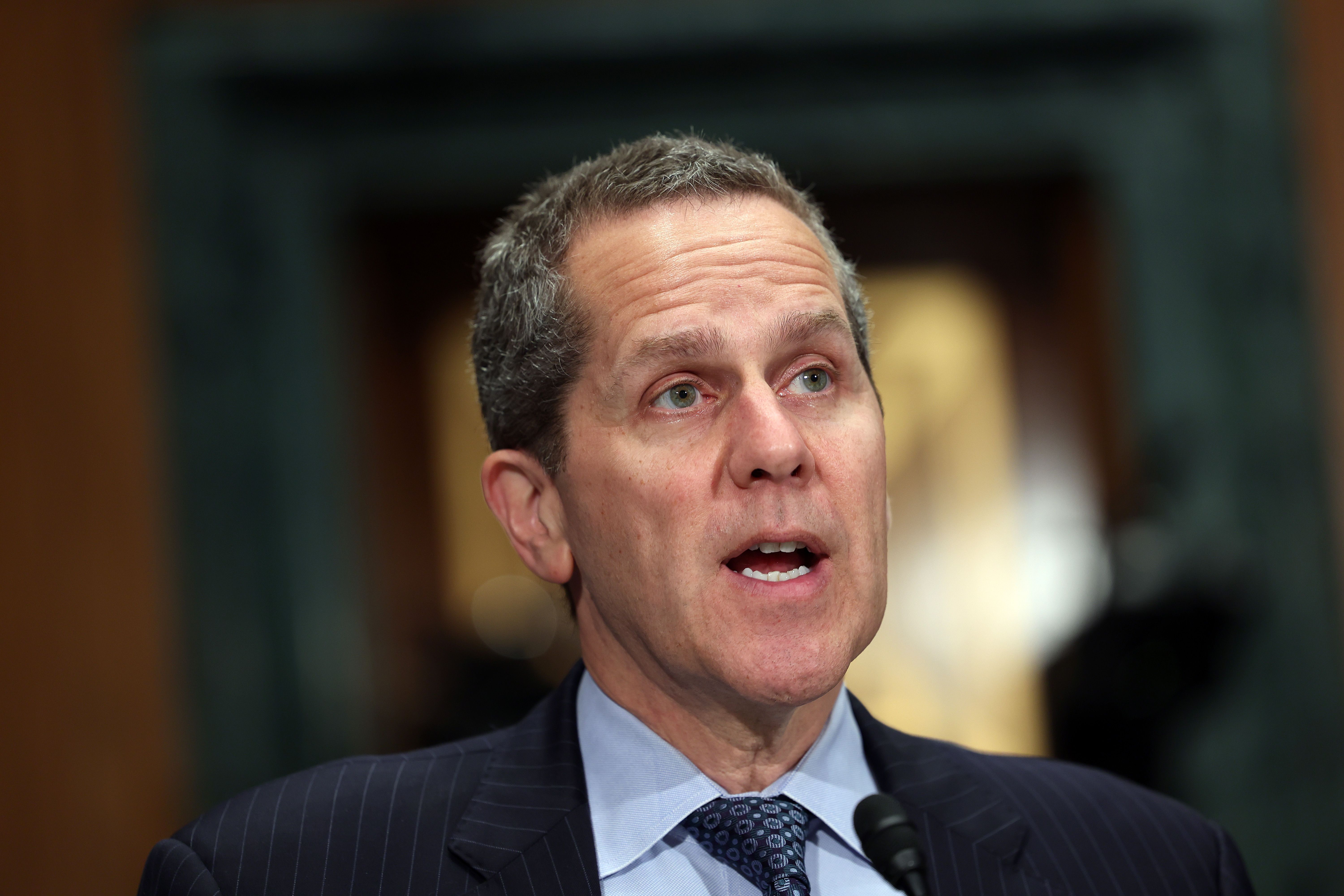It’s been a big year for Ethereum — with The Merge heralding the switch from Proof-of-Work to Proof-of-Stake.
But there are still issues looming for the network, issues significant to the health of the entire industry, with scalability chief among them. We were able to talk with Cartesi founder Erick de Moura about what his project is doing to tackle this issue and what steps need to be taken to refine DeFi and make good on its promise.
You say The Merge was an important step but doesn’t solve scalability issues. Why’s that?
Whoever had the chance to attend the opening ceremony of DevCon in Bogotá knows that The Merge was a monumental technical undertaking, the collective result of multiple research and engineering teams coordinating their hard work for a long time. The Merge drastically reduces the energy consumption of Ethereum and brings positive cryptoeconomic consequences.
It was meant to change the network’s consensus mechanism and not directly address the scalability issues. However, it represents a fundamental step toward Ethereum’s “rollups-centric roadmap,” which will drastically reduce costs and lead to the network’s mass adoption.
What are the scalability and programmability problems that still need to be addressed?
The scalability problem has two main aspects: data and computation. On the blockchain, both resources are extremely limited, scarce, and thus expensive. From a technical perspective, Ethereum can only be a viable platform for further innovation and mainstream adoption if it can accommodate orders of magnitude more data and computation.
With the implementation of the EIP-4844 and later with sharding, Ethereum will dramatically increase its data-availability capacity. Meanwhile, multiple rollup projects are working to improve smart contracts’ computational capabilities and allow for more transactions to be processed.
But then, scalability is not the only problem that needs to be addressed. Good programmability is another fundamental requirement for further innovation. Developers will need much better tools and building blocks for their smart contract logic since the existing ones are rudimentary compared to traditional web and desktop development platforms.
Can we ever get to a point where transaction fees on a Layer 1 blockchain are truly affordable?
Yes and no. The rollups-centric vision of Ethereum expects the bulk of blockchain transactions to take place on multiple rollup layers running on top of layer one. However, at some point, these rollup chains should be truly affordable and capable of accommodating the mainstream demand while preserving the strong security guarantees of layer 1. So, from the user’s perspective, they should enjoy fast and cheap transactions on rollups, with the strong security guarantees of Ethereum.
What’s stopping developers from building powerful decentralized apps?
The main reason is, again, scalability. The scarcity of computational and data resources deters innovation. What is worse, with the bidding wars for blockspace, blockchains get gentrified, and only a few applications survive — those where users are willing to pay a lot for each transaction. Financial applications prevail over non-financial ones, and we end up with a non-inclusive network for developers and users alike. Developers don’t want to create decentralized applications that won’t be realistically adopted.
To make things worse, developers undergo adverse programming conditions. It is hard to optimize their smart contracts for their applications’ innovative features, and they cannot code on top of rich open-source components like their colleagues on mainstream do.
What are your thoughts on Solidity — and are other programming languages needed?
Solidity is a handy language, but the general programming experience of smart contract developers is far from ideal, and that is not Solidity’s fault.
Smart contract developers cannot build on top of pre-existing software components as mainstream developers do daily. This situation resembles someone having to manufacture bricks and steel bars before erecting their buildings.
Here is an example: Topology, an ingenious team developing a game on StarkNet, had to code their own software to simulate planetary dynamics! That’s a massive undertaking in itself! On the other hand, Angry Birds, a well-known mainstream game that relies on gravity physics, could be implemented using pre-existing physics software.
Can you simply explain what rollups are, and the role they’ll play in the future of blockchains?
Several algorithms and systems were designed to mitigate the scalability problems of blockchains, such as state channels, plasma, and side-chains. Rollups are a relatively newer approach that established itself as a favorite mainly because of its ability to preserve the strong security guarantees of its underlying blockchain.
With rollups, all transaction data is compressed and added to the blockchain while all processing or computation is performed off-chain by a separate network of nodes. Rollups reduce the use of data on blockchains and virtually eliminate all the computational load from them.
Is enough being done to ensure the public can interact with blockchains and not even realize?
It will happen naturally when multiple technological problems are overcome. At the blockchain industry’s core, we can find a very positive ethos of collaboration and creation of public goods. The industry has no shortage of financial incentives, intellectual capacity, and passion. There is a lot of work to be done, but the technological progress is clear, especially when you immerse yourself among the builders of this industry in conferences like DevCon. It is just a matter of time.
You’ve created something called Cartesi Rollups — tell us about that.
We created Cartesi Rollups to address the limitations of computational scalability and programmability, as we discussed previously. It allows developers to create exclusive rollup chains for their applications on top of Ethereum, alternative blockchains, or existing layer two chains.
By using Cartesi Rollups, developers can count on orders of magnitude more computation for their smart contracts than they would have if they were using Ethereum or any layer two.
Cartesi Rollups takes smart contracts much closer to the real computations and software we see traditionally on Web2.0 or desktop. It allows for many new possibilities beyond the simple DeFi and NFT smart contracts the industry saw in previous years.
In your eyes, what does the next generation of blockchain technology look like?
Blockchain technology is on the brink of a revolution. Protocols and application projects understand the need for modularity and specialization. Ethereum and other layer ones are shifting their focus to scaling data and letting rollup projects focus on scaling computation.
Application-specific rollups and better programmability given by execution layers like Cartesi Rollups will provide DApps a lot of flexibility and computational power without sacrificing security. Ultimately, the collaboration of multiple passionate and skilled teams bringing very important pieces together will create a powerful infrastructure for an “internet of value” that will allow for much more innovation beyond ICOs, NFTs, and DeFi.
Rollups often offer a cheaper solution to Ethereum — but then become more expensive as they’re used by a greater number of people. How can this be prevented?
This problem happens because, in current EVM-based rollups, different applications share the same rollup chain. As more and more applications gradually share the same rollup virtual machine, they enter a zero-sum fight for a slice of the VM’s computing capacity. This leads to gentrification: only a small fraction of applications remain viable; the others are driven out. It is just a matter of time before these networks become congested and expensive.
The answer to this problem is to use application-specific rollups, which is exactly what Cartesi Rollups provides.
Disclaimer. Cointelegraph does not endorse any content or product on this page. While we aim at providing you with all important information that we could obtain, readers should do their own research before taking any actions related to the company and carry full responsibility for their decisions, nor can this article be considered as investment advice.
Read More: news.google.com










 Bitcoin
Bitcoin  Ethereum
Ethereum  XRP
XRP  Tether
Tether  Solana
Solana  Dogecoin
Dogecoin  USDC
USDC  Cardano
Cardano  Lido Staked Ether
Lido Staked Ether  TRON
TRON  Avalanche
Avalanche  Sui
Sui  Wrapped stETH
Wrapped stETH  Chainlink
Chainlink  Toncoin
Toncoin  Shiba Inu
Shiba Inu  Stellar
Stellar  Wrapped Bitcoin
Wrapped Bitcoin  Hedera
Hedera  Polkadot
Polkadot  WETH
WETH  Bitcoin Cash
Bitcoin Cash  Uniswap
Uniswap  Hyperliquid
Hyperliquid  Pepe
Pepe  Litecoin
Litecoin  LEO Token
LEO Token  Wrapped eETH
Wrapped eETH  NEAR Protocol
NEAR Protocol  Internet Computer
Internet Computer  Ethena USDe
Ethena USDe  USDS
USDS  Aptos
Aptos  Aave
Aave  Render
Render  Mantle
Mantle  POL (ex-MATIC)
POL (ex-MATIC)  Cronos
Cronos  Bittensor
Bittensor  Ethereum Classic
Ethereum Classic  Artificial Superintelligence Alliance
Artificial Superintelligence Alliance  WhiteBIT Coin
WhiteBIT Coin  Virtuals Protocol
Virtuals Protocol  Arbitrum
Arbitrum  MANTRA
MANTRA  Filecoin
Filecoin  Tokenize Xchange
Tokenize Xchange